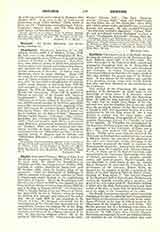

Zenonopolis, titular see of Asia Minor, suffragan of Seleucia Tracima in Isauria. The abbreviated form used in the Roman Curia is Zenopolis. It was the native village of Emperor Zeno, and was formerly known as Codissos. In the “Notitia Episcopatuum” of Antioch (sixth century) Zenonopolis is among the suffragans of Seleucia (Ethos d’Orient, X., 145). About 732 the province of Isauria was joined to the Patriarchate of Constantinople, and Zenopolis appears about 940 in the “Notitia Episcopatuum” of Constantine Porphyrogenitus, but is situated in Pamphylia (Georgius Cyprius, “Descriptio Orbis Romani”, ed. Gelzer, 1606). The city is again mentioned by George of Cyprus in the seventh century (op. cit., 847) and by Constantine Porphyrogenitus (De The-mat., I, 13) as a city of the Decapolis. Le Quien (Oriens Christ., II, 1033) mentions two bishops: Eulalius, present at the Council of Constantinople, 681; Marcus, at that of Nice, 787. Gennadius, who assisted at the fifth council, 553, as bishop of Zenonopolis in Pamphylia, was very probably a prelate of this see (Mansi, “Concil. Coll”, IX, 176, 393). Zenonopolis is today Isnebol in the caza of Ermenek and the vilayet of Adana (Ramsay, “Asia Minor,” 365). It must not be confounded with another of the same name situated in Lycia.
S. VAILHE

